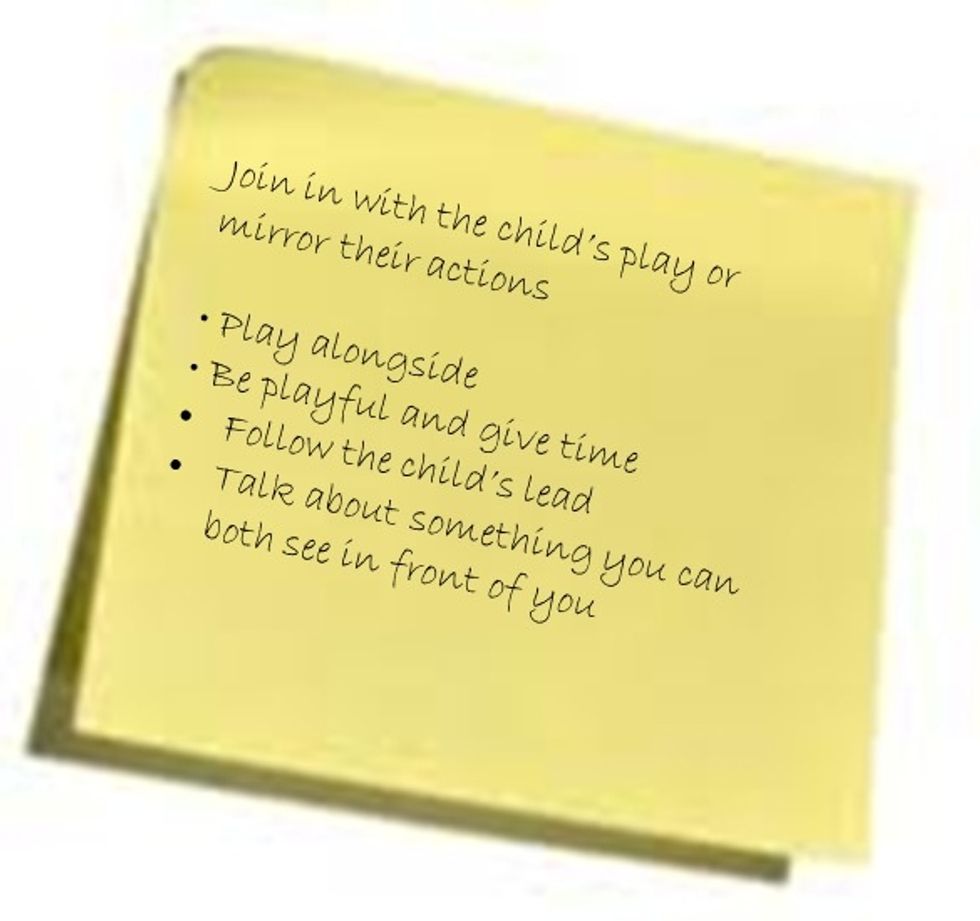How to support children's communication and language
This know how guide is for anyone who is in the fortunate position to support children in their foundation years.
33
STEPS
TOOLS

Communication and Language is a prime area of development for children and the optimum time for this to be nurtured in children's early years 0-5.

The quote above is a starting point but we need to be acutely aware that the way we talk and respond to children can either support and nourish or hinder and limit children's language development.

Know that children start communicating as soon as they are born and know you are key in supporting the development of this right from the start. Meet Edward at 2 hours old, already communicating.

Edward is sticking his tongue out copying his daddy - he is communicating. We need to respond sensitively to children's communication and immerse them in a world of talk and positive body language.

This is a great guide to understand developmental mile stones and what you can do to support children's communication and language. Go to www.ltcl.co.uk/resources to download this document.

Always get down to the child's level, relax, follow the child's lead. Give children time to process language and respond - at least 7 seconds.





Avoid asking closed questions such as: what is it? How many legs? What colour is it? These only result in a child speaking in 1 or 2 word answers.

Ask open ended questions: "I wonder what Ed has got there? Oooooo a ladybird, I wonder where you found him? "

Comment on what the child is doing -"ooo a ladybird, I hope he isn't hungry!"

Repeat what the child has said and 'step up' your language by adding 1or 2 more words. Child says 'ladybird' you say 'yes, a red, spotty ladybird' or 'yes - a tiny, red lady bird.'

Comment and model your thinking: 'hmmmm, I wonder where he lives!' or ' he looks a bit lonely, let's find him some friends.'

Explain what is happening to the child: ' Be very gentle, a lady bird is small and delicate - we don't want him to get squashed.'

Remember - too many questions will not support children's communication and language - open ended questions are great, but if we solely rely on these, we are limiting the level of language.

Remember to repeat and 'step up' the child's language, comment on what the child is doing and explain thinking a lot more than the asking questions.

www.elklan.co.uk would recommend 'The Rule of Thumb' 1 open ended question to 4 comments, repetitions, 'step ups' of language and explanations.

Look at this picture with the tiger - rather than questioning a child with 'What colour is it? What sound does it make? How many legs has it got?' Stop and think: What could you say instead?

Remember: "T'aint what you do, it's the way that you do it...... That's what gets results........"

Coming soon - a parents guide to phonics..... What else would you like to know? Email : info@ltcl.co.uk with your requests.
- Children
- 1.0 Skilful adult
- Time